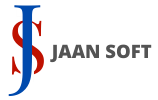Living in Los Angeles means dealing with a unique climate—mild temperatures, occasional humidity spikes from coastal fog, and the rare but intense rainstorms. While the city’s sunny reputation is well-deserved, these conditions can create hidden moisture problems inside homes, leading to mold growth. Mold thrives in damp, poorly ventilated spaces and can pose serious health risks, from allergies to respiratory issues. If you’re noticing unusual signs in your property, it might be time for a professional mold inspection. This article explores the top indicators that your LA home needs attention, helping you spot issues before they escalate.
Musty Odors Lingering in the Air
One of the most common and earliest signs of mold is a persistent musty smell, often described as earthy or damp like wet leaves or old books. In Los Angeles, where homes are frequently sealed against the elements to maintain that perfect indoor climate, odors can build up without fresh air circulation. If you detect this scent in your bathroom, basement, or even behind furniture, it could indicate hidden mold colonies feeding on organic materials like drywall or wood.
Don’t dismiss it as “just the LA smog” filtering in—mold odors are distinct and won’t fade with air fresheners. In humid microclimates like those near the Hollywood Hills or beachfront areas, where morning dew lingers, this sign is especially prevalent. A mold testing Los Angeles can use tools like moisture meters to trace the source, preventing the problem from spreading to HVAC systems and affecting your entire home.
Visible Mold Growth on Surfaces
Spotting black, green, or white fuzzy patches on walls, ceilings, or floors is a clear red flag. In LA’s stucco-heavy architecture, mold often appears in cracks or around windows after leaks from the infrequent but heavy rains during El Niño seasons. Bathrooms and kitchens, with their steam and spills, are prime spots, but check attics too—roof leaks from older tiles can foster growth unseen for months.
Even if it’s just a small spot, visible mold means spores are airborne, potentially irritating eyes, skin, and lungs. For families with children or pets, this is urgent. Los Angeles building codes emphasize quick remediation, and inspectors certified by organizations like the Indoor Air Quality Association can assess whether it’s surface mold or a deeper structural issue, ensuring safe removal without DIY risks like spreading spores.
Unexplained Water Damage or Stains
Water stains on ceilings, walls, or carpets that appear without an obvious spill signal potential mold havens. In earthquake-prone LA, subtle plumbing shifts or foundation cracks can introduce moisture, especially in homes near the San Andreas Fault line. Look for yellowing, bubbling paint, or warped flooring—these are mold’s calling cards as it breaks down materials while growing.
Post-rain inspections are crucial here; the city’s drainage systems can overflow during storms, leading to basement flooding in low-lying areas like the San Fernando Valley. Ignoring these stains invites toxic black mold (Stachybotrys), linked to severe health effects. A thorough inspection involves infrared cameras to detect hidden leaks, providing peace of mind and preventing costly repairs down the line.
Frequent Health Symptoms Among Household Members
If allergies flare up inexplicably—sneezing, coughing, watery eyes, or headaches—especially when indoors, mold could be the culprit. LA’s pollen is notorious, but persistent symptoms that improve outdoors point to indoor air quality issues. Vulnerable groups like asthmatics or immunocompromised individuals face heightened risks from mycotoxins in mold spores.
In densely populated neighborhoods like Echo Park or Silver Lake, where homes are close together, poor ventilation exacerbates this. Track symptoms: if they correlate with specific rooms, it’s time for an inspection. Experts recommend air sampling to quantify spore levels, often revealing elevated counts above safe thresholds set by the EPA.
Increased Humidity and Poor Ventilation
High indoor humidity above 60% creates a mold-friendly environment, measurable with a simple hygrometer. LA’s coastal influence brings moist air, and air-conditioned homes can trap it if vents are blocked or ducts leaky. Signs include condensation on windows or a clammy feel, common in mid-century modern homes with original single-pane glass.
Without proper airflow, especially in windowless rooms, mold proliferates. Fans and dehumidifiers help temporarily, but an inspection identifies root causes like insulation gaps. In fire-conscious LA, where homes use foam insulation, undetected moisture can lead to rapid mold outbreaks.
Peeling Paint or Bubbling Walls
Discoloration or peeling in non-exposed areas often hides mold underneath. LA’s dry heat can mask slow leaks from sprinklers or AC condensation, causing paint to blister as mold erodes the substrate. This is sneaky in renovated homes where fresh paint covers old problems.
Inspectors use borescopes to peek behind walls, confirming if it’s cosmetic or a moisture invasion. Early detection saves on remediation costs, which can soar if structural elements are compromised.
In conclusion, ignoring these signs in your Los Angeles home can lead to health hazards and expensive fixes. With the city’s variable weather, proactive mold inspections—ideally annually or after water events—are essential. Contact a local certified inspector today to breathe easier in the City of Angels.
